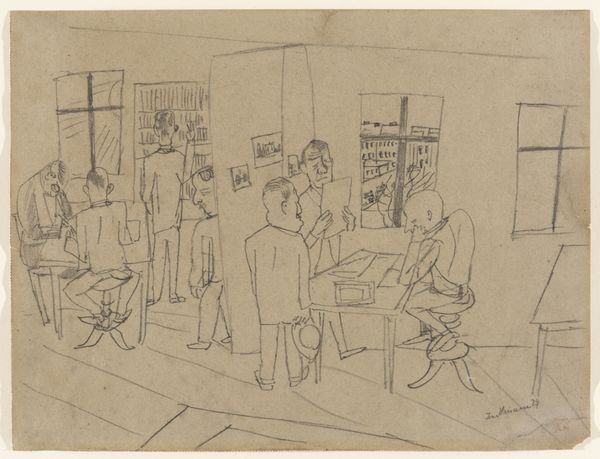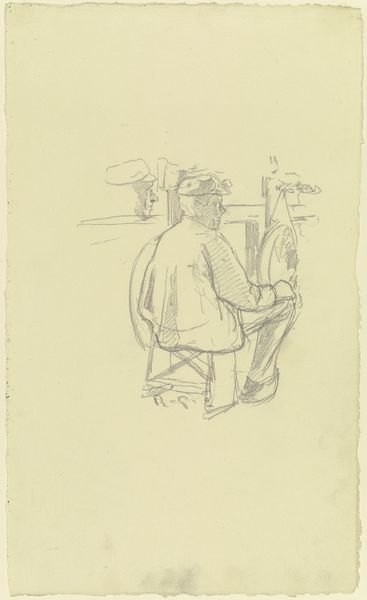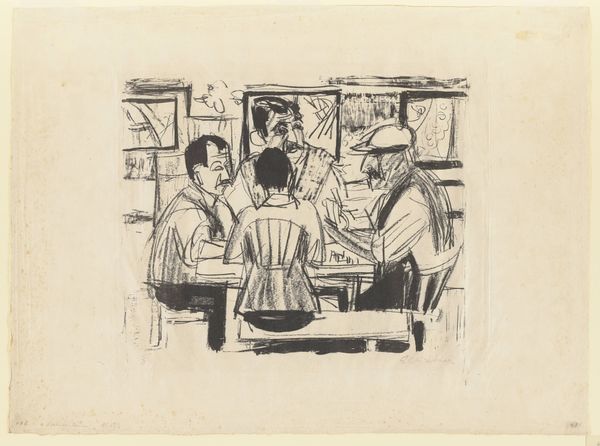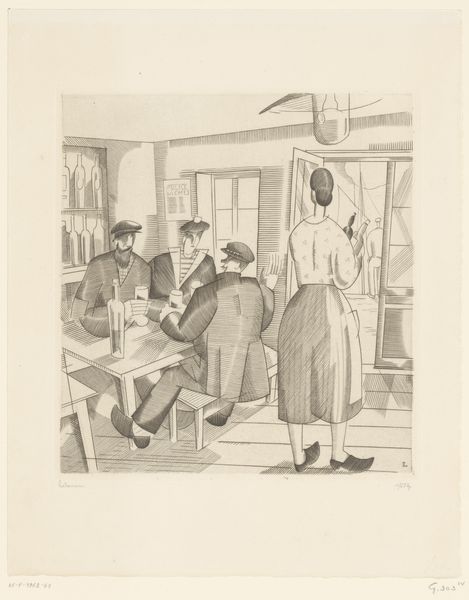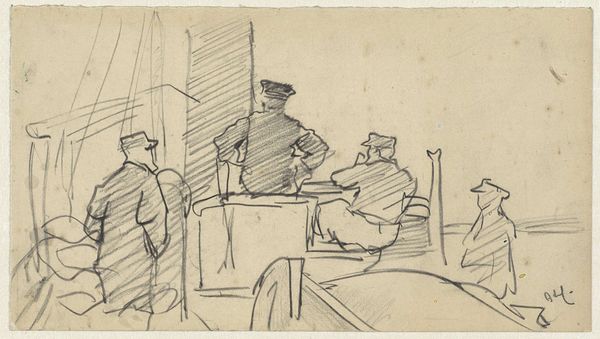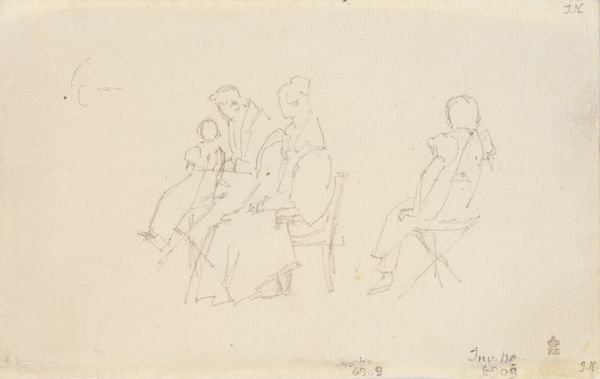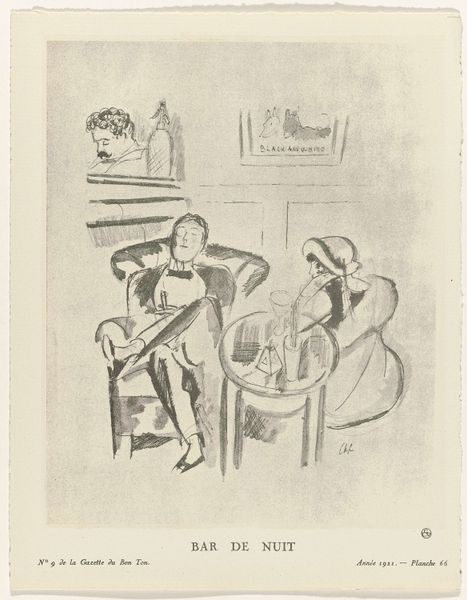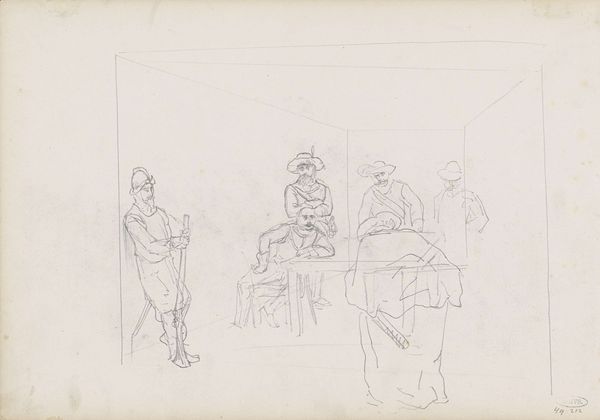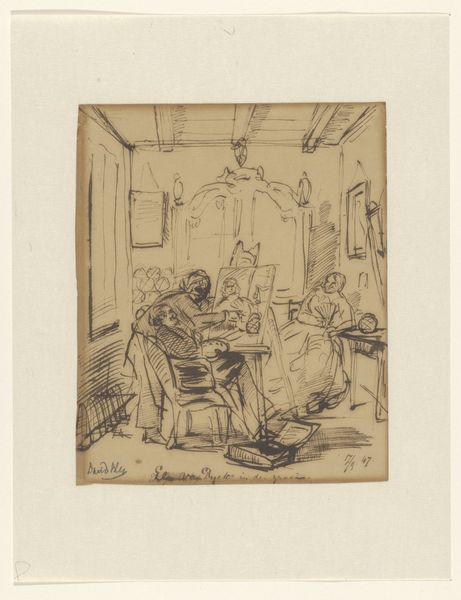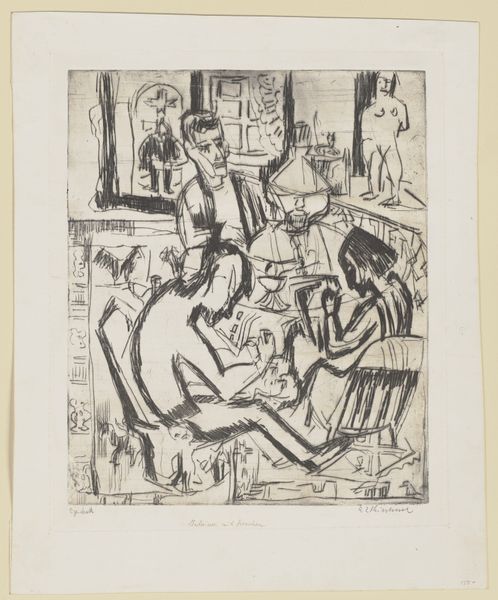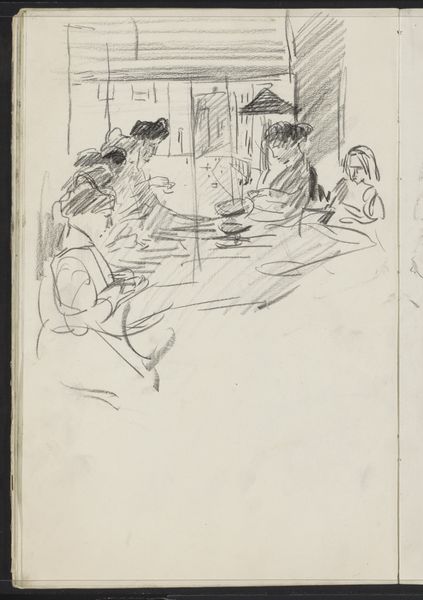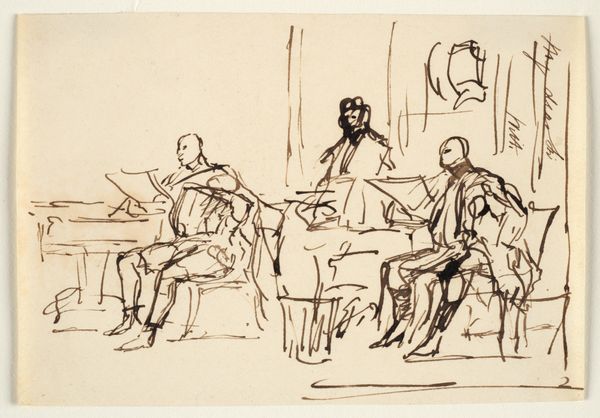
drawing, print, graphite, pen
#
drawing
#
cubism
# print
#
graphite
#
pen
#
cityscape
#
genre-painting
#
modernism
Dimensions: height 194 mm, width 180 mm
Copyright: Rijks Museum: Open Domain
Curator: What catches my eye immediately is the odd light—or lack thereof—in this print; it gives the entire café scene an eerily serene feel, don't you think? Editor: It does indeed. And this is "Café Interior with Customers and Waitress," a 1925 graphite, pen, and ink drawing by Jean Emile Laboureur. We see this blend of cubist style and modernist sensibility depicting a common, everyday scene. What strikes you particularly about that sense of serenity? Curator: It is in the simplicity, I believe, almost like a muted stage, if you get me. It seems Laboureur has managed to convey, through sparse lines and minimal shading, this potent sense of suspended animation; look at those patrons frozen around their table, so utterly devoid of cheer! Editor: I see what you mean! This austerity lends a powerful weight to what otherwise seems a casual scene. Notice how the artist employs very deliberate shapes to delineate the figures. The waitress is stylized and monumental almost, juxtaposed against the geometric men. There's an almost religious veneration given to her; this archetypal server is a bringer of needed beverage. The bulbous jug placed so centrally on the table makes me consider ritual… a communal sacrament, maybe? Curator: Hmmm… I like this symbolism layered beneath the plainspoken narrative, a kind of hushed intensity playing out in an unromantic setting. I get a sort of silent tension radiating out of each individual! Even her apron evokes an association with the garments of a sacred rite... she is at the center! Editor: Absolutely! She embodies timelessness! Even the light fixture above her appears halo-like, suggesting this quotidian space transformed into something more permanent, and I note the use of shadow implying judgment about the interior and figures in the piece. Curator: What I admire here, is Laboureur taking something totally of the moment—a post-war café scene—and lifting it towards some archetypal portrayal. One where these figures gain such weight in history and feeling because the very scene is weighted! The use of clean strokes gives form and shape to an interior otherwise stripped and spare. It's hauntingly intimate, somehow. Editor: Indeed! With just lines, forms, and minimal shadow, Laboureur captured more than the everyday; they tapped into something echoing on through cultural memory. A silent witness to shifting times and tastes... Curator: And made that café table something other and grander than just what we'd assume... food for the mind!
Comments
No comments
Be the first to comment and join the conversation on the ultimate creative platform.
